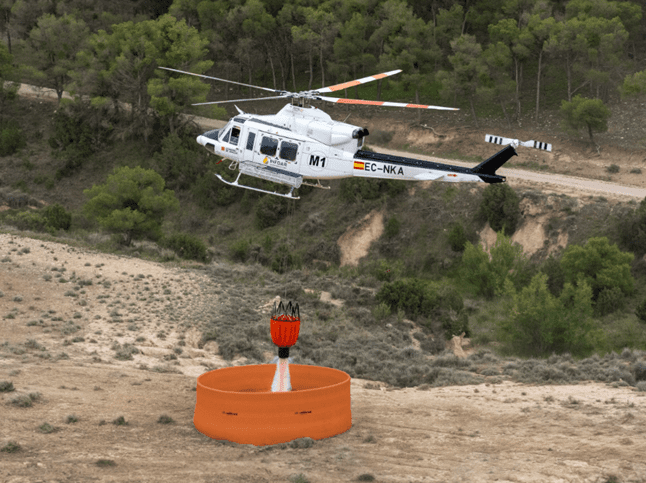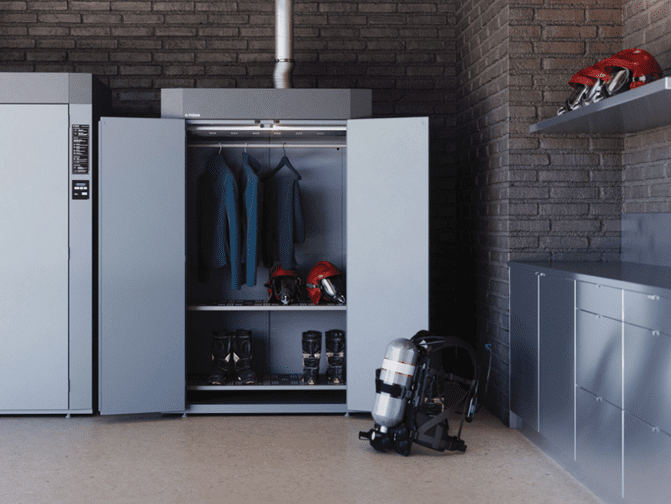 Mark Fletcher takes a look at hand tools and portable rescue equipment and discovers that tried-and-trusted equipment based on decades-old technology still has its place alongside its more contemporary peers. What is more, the manufacturers are listening to fire fighters’ demands with regards to the issues they are facing.
Mark Fletcher takes a look at hand tools and portable rescue equipment and discovers that tried-and-trusted equipment based on decades-old technology still has its place alongside its more contemporary peers. What is more, the manufacturers are listening to fire fighters’ demands with regards to the issues they are facing.
Hand tools form the lifeblood of any fire fighter’s arsenal. From the buckets and axes carried by the very early fighters all the way up to modern, portable cutters and spreaders, handheld rescue tools will always form the mainstay of the first responder’s equipment list.
Considering the major advances that have appeared over the last 60 years, arguably lead by the Jaws of Life which made its first appearance in 1963, traditional basic hand tools still have a part to play in the modern fighter’s job. In many instances there is simply a desire to lift, pull or push and for these actions often the simplest solution is the best.
One of the most elegant and simplest solutions around is the First Responder Jack (http://firstresponder.hi-lift.com/) from the Hi-Lift Jack Company, based in Bloomfield, Indiana, USA, a variant of which has been in existence since 1905, predominantly in agriculture and more recently off-road.
Thanks to recent modifications championed by Jeff Pugh and his colleagues (all of whom are professional fire fighters) at The Puyallup Extrication Team (http://www.thepxteam.org/), a non-profit education team based in Puyallup, Washington, USA, the jack now has a whole new look and features many modifications that enhance its abilities – making it ideally suited for fire and rescue services.
Designed for use in extrication, heavy rescue, forcible entry, rit/ric procedure sand stabilisation and shoring, it is available in 36, 48 or 60 inch sizes. With its all steel, cast iron and hi-strength aluminium construction, it offers up to 4,660 lbs (2,014kg) of leveraging, lifting and winching options and its large base provides a safe and effective platform, while offering a wide array of rescue options that encompass 4x4s, chain and straps and 360 degree pinnable rotation.
A fraction of the cost of other expensive rescue tools, the First Responder Jack offers the same spreading and ramming options used in extrication as expensive hydraulic tools, which makes it ideal for remote access with limited resources. The Jack Features: a removable top clamp-clevis attachment, rated to the full capacity of the jack for winching, clamping and spreading; durable, powder-coated, bright yellow main components with fire red actuating pieces; safe-use Information, including rated-load details and operating instructions and luminescent features for use in IDLH and low-light atmospheres.
Pugh is very vocal in his ideas about rescue equipment and, as a professional fire fighter he has a vested interest in their efficacy in the field. One concept he touches on, which is also an issue faced by Richard Wood, Director of Weber Rescue UK (http://www.weberrescueuk.com/) are the issues faced by fire fighters when it comes to extracting occupants from modern cars.
With and occupancy protection in the event of crashes or collisions riding high on the list of desirable attributes of the modern automobile, fire fighters are faced with continual changes in the materials used in cars; with structural steels and pillar configuration making their life a lot more difficult.
Weber Rescue’s answer to this issue is its new RSX200 107 Plus range (http://www.weber.de/wr/en/rettungsgeraete/rsx200-107-plus.php), which incorporates cutter blades with inserts made of a high-strength alloy that gives fire fighters the ability cut high-strength and reinforced vehicle body parts. As well as the additional cutting capabilities offered by the new cutter, the range also offers lower maintenance costs due to the fact that only the inserts need to be changed rather than the whole blade assembly.
Wood elaborates on the changing face of the fire service and how the tooling companies have to keep pace with their needs. “It used to be that many fire tenders carried combi tools – one tool that could do multiple jobs.
The trend was then for the development of specialist tools, dedicated to single tasks. What we are seeing now is that with budgetary restraints, many fire services are creating rapid-reaction teams in smaller vehicles who now need much more portable and flexible tool sets. This has lead to the desire to go back to the combi tool approach, so not so many tools need to be carried.”
Another major advance Pugh elaborates on is the creation of electrically powered hydraulic tools such as the eDRAULIC range from Hurst (http://www.jawsoflife.com/Products/Default.aspx?ProductId=2340), the company that first bought us the Jaws of Life. By providing portable electrical power, the tools are not reliant on a separate hydraulic supply, which makes them far more suitable for lightly equipped first responders and those who need to get into remote or confined spaces.
Pugh is also extremely impressed with Packexe SMASH (http://www.packexesmash.com/en/), a self-adhesive film that secures automotive glass for faster and safer vehicle extrication, with results showing that it virtually doubles the strength of glass, averaging a 42% reduced risk of glass breaking.
With both tooling firms and fire fighters expressing concerns with the growing adoption of high strength structures in cars, it appears that the automotive industry is a regular moving target for OEMs and users alike. Pugh explains: “Vehicle manufacturers are understandably stingy about trade secrets, especially relating to the information that fire fighters need to know, such as that pertaining to supplementary restraints. This information can be tough to get and I hope manufacturers were more forthcoming with this information and would help us to safely identify cut zones.
In the meantime it is possible to get basic information relating to safety-critical equipment within many car models (http://www.rescuesheet.info/seite_3.html) and, as expected, if you are armed with a smart phone or tablet, in this case an iPhone or iPad, there is of course the obligatory app (http://bohemianinnovation.com/extraction.html), which highlights the cutting zones in many modern cars.









